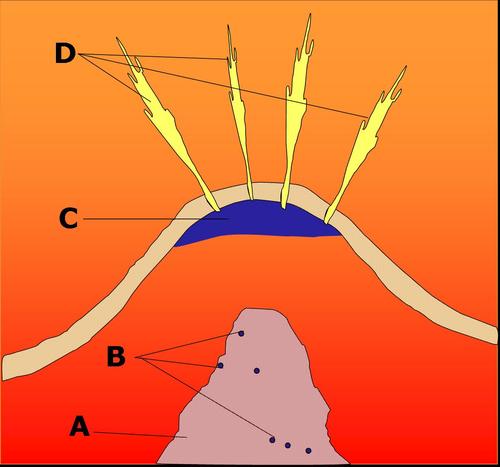Hydrothermal Evolution
Evolution of magma-related hydrothermal system
A) The parent intrusive from which most of metals are extracted is intruded in the upper crust (less than 6 km).
B) The low-pressure enviroment at which the intrusives are placed causes the umixing of magmatic-hydrothermal fluids (mainly water) as it cools and crystallizes, a process that helps to extract and concentrate metals from the parental magma.
C) Exsolved volatiles accumulate above the intrusive, below the brittle-ductile boundary. This accumulation of volatiles greatly increases the pressure until fluids break through into the brittle environment producing a dense set of fractures and breccias.
D) Simultaneously with the breakthrough at the brittle-ductile boundary, the accumulated fluids will invade the country rock, thereby developing a large hydrothermal system.
The pass of magmatic metal-bearing aqueous fluids from high to low pressure enviroment at shallow depth causes the hydrothermal fluids to boil and unmixes them into vapor and brine.
Boiling will trigger the massive precipitation of elements transported by the hydrothermal solutions. These fill the previously formed fractures and originate multiple sets of polydirectional veins called "stockwork". These contain most of the ore.
Magmatic hydrothermal solutions will later interact in different degrees with groundwater.


